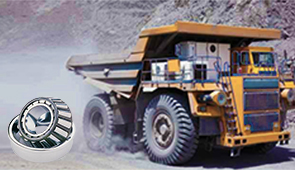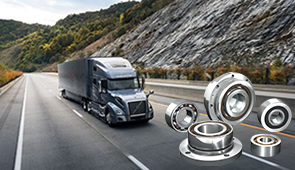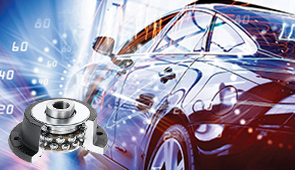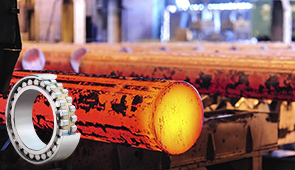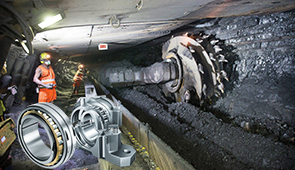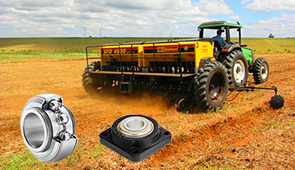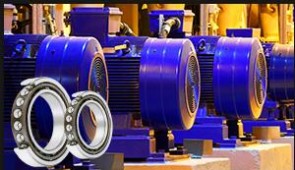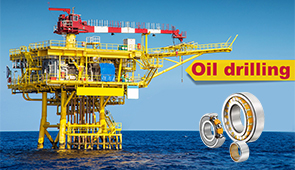Understanding Different Types of Bearings: A Comprehensive Guide to Ball Bearings, Deep Groove Bearings, and More
Bearings are an integral component in countless mechanical systems, playing a critical role in minimizing friction and enabling smooth motion between moving parts. From industrial machinery to automotive applications, the type of bearing selected directly impacts the efficiency, performance, and lifespan of the equipment. This guide explores the diverse range of bearings available, with a particular focus on ball bearings, deep groove bearings, and other commonly used variants. By understanding their unique designs, functions, and applications, readers will gain a deeper insight into the selection process and how these components contribute to optimized mechanical operations. Whether you are an engineer, a technician, or simply curious about how machines work, this comprehensive overview will provide the foundational knowledge needed to appreciate the technical and practical significance of different bearing types.
What Are the Main Types of Bearings?
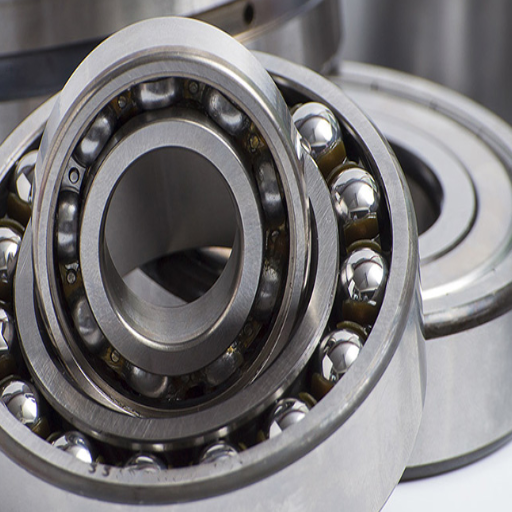
How Do Ball Bearings Work?
Ball bearings reduce friction during rotation or radial and axial movements using rolling elements in the form of balls that are positioned between two rings commonly known as inner and outer races. After observing how they function, I found out that the balls are very helpful during the motion because they share the load at the contact spots resulting in reduced surface contact and friction.
- Material Composition: This is normally made of wear-resistant materials like chrome or stainless steel to provide durability and precise dimensions.
- Radial and Axial Load Capacity: This indicates the greatest burden that can be exerted on the bearing in both directions. A radial load is when the force is perpendicular to the axis. On the other hand, the axial load is when the force moves parallel to the axis.
- Speed Rating: Abbreviated as RPM, this factor indicates the highest rate of rotation of the bearing without overheating or getting damaged.
- Bearing Lubrication: With the use of grease or oil, prolonged life of the bearing can be achieved with the appropriate lubrication achieving low resistance.
- ABEC and ISO Precision Grades: Other standards of precision. Higher grade tolerances mean a more precise dimension which is more favorable in delicate and high-speed applications.
With this knowledge, ball bearings can easily be used and mounted in the best fitting spots in machines to achieve the right effect.
The Role of Plain Bearings in Industry
Plain bearings, or bushings and journal bearings as they’re often called, are extremely important parts of many industries enabling smooth and efficient motion whether is it rotary, sliding, or oscillatory. Unlike other types of bearings, rolling element bearings do not utilize rolling elements but instead operate using sliding contacts between surfaces. Their design also makes them the preferred choice when considering economical factors and simplicity along with effective high-load support for moderate speed conditions.
The performance of plain bearings is highly influenced by material composition and lubrication. Bronze, steel, and some specialized polymers are commonly used materials for plain bearings, and they are carefully selected based on load capacity, environmental conditions, and resistive wear. For example:
- Load Capacity: Due to high static and dynamic loads, these bearings can support a broad scope of load capacities ranging from 10-100MPa.
- Friction Coefficient: If lubrication is applied, such as oil or grease, the friction coefficient can reach as low as 0.05 with the ensureance of minimal energy loss.
- Speed Limits: These types of bearings are most effective in the low to moderate range, with valley speeds of 10m/s to restrict excess wear on the bearing.
- Thermal Resistance: Some modern materials such as PTFE composites have a greater temperature tolerance, which makes plain bearings effective in environments of up to 250°C.
In heavy industries, automotive processes, and manufacturing machines, plain bearings are essential because they can withstand tough conditions such as dirt and shaking. These components, when chosen and looked after appropriately, greatly improve the operational efficiency and longevity of industrial systems.
Why Are Ball Bearings So Popular?
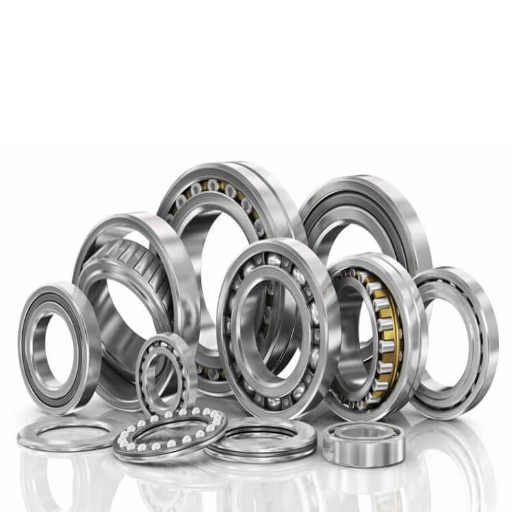
Advantages of Deep Groove Ball Bearings
Deep groove ball bearings are positioned at the top of the most-sold bearing types due to their flexibility, toughness, and effectiveness in various applications. These bearings are built with high load-carrying features for both radial and axial loads, and therefore, they are widely used in different industrial and mechanical fields.
- Operational Speed: Based on their design, these bearings have a high operational ability, with RPM exceeding 10,000 in some cases. This means that these deep grooves are well suited for electric motors and blow fan-type machinery.
- Low Friction: Due to the optimal design of the raceways and balls, deep groove ball bearings have low friction. This trait enhances the effective use of energy and reduces the wear and tear on the parts.
- Extended Lifespan: Due to proper lubrication and material specifications like high-grade steel or ceramic components, the fatigue life of these bearings can be substantially lengthened.
- Sealing Options: These bearings can be supplied in different assembly forms like sealed, shielded, or open to give protection from contaminations when necessary.
- Excellent Misalignment Tolerance: While these bearings are notched primarily for use in optimum alignments, some units will accommodate minimal-level misalignment that is often found in supported arrangements.
Such qualities make deep groove ball bearings a dependable selection in the automotive and aerospace industries. Aligning predetermined specific technical requirements with features that are already provided, guarantees the most effective system operation and longevity.
Applications of Angular Contact Ball Bearings
High-precision machinery such as those used in industries such as automotive, aerospace, and industrial manufacturing heavily rely on Angular contact ball bearings. These purpose-built bearings work best when there are radial and axial loads that need to be accommodated simultaneously at great speeds and precision. Common use cases for this specialized set of bearings include:
- Automotive Gearboxes and Transmissions: Angular ball bearings are crucial for the flawless transmission of power as they support the thrust and radial loads during the meshing of gears.
- Pumps and Compressors: Their ability to handle thrust in one direction axial loads makes them applicable in demanding conditions such as in the straining pumps.
- Wind Turbine Generator Components: Their high load capacity combined with durability makes them trustworthy for use in renewable power systems.
From a technical perspective, contact angle is one significant technical requirement that precision ball bearings are designed for. The most common settings are 15°, 25°, or 40°. The higher the angle, the better the axial load capacity. Other technical requirements include material strength, preload configurations, lubrication, and rigidity.
How Do Roller Bearings Differ From Ball Bearings?
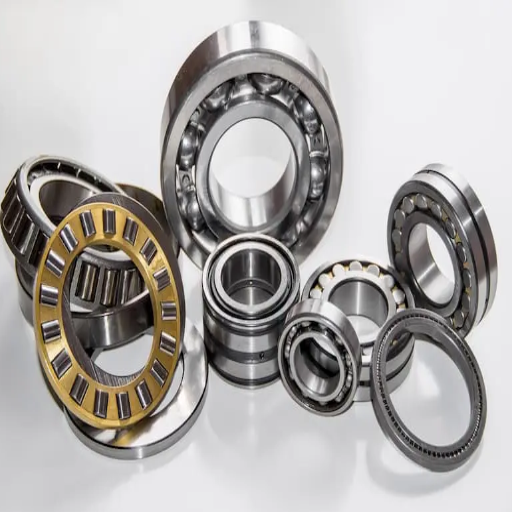
Understanding the Mechanics of Tapered Roller Bearings
Because of their geometric shape, tapered roller bearings operate under radial and axial loading simultaneously. The conical shape of the inner raceway of the ring and the outer raceway, combined with the inclination of the rollers to the bearing axis, provides an efficient force application. Specifically, the contact angle governs the proportion of axial to radial load capacity; for example, an angle of 40° provides greater support to axial loads, while an angle of 15° is suited for applications predominantly having radial loads.
- Contact Angle: The deciding factor for controlling the axial and radial load capacity (for example, 15°, 25°, 40°).
- Outer Diameter and Width: Determines the adequacy of mechanical fit and the bearing strength in the assembly.
- Material Specifications: Usually made from high-strength steel which can withstand large amounts of force for a long time.
- Preload Adjustment: With the application of preload, proprietary tension increases bearing rigidity and minimizes deflections for applications with high precision.
- Lubrication Type: The use of grease or even oil is allowed, which increases life by reducing wear and dissipating heat in the process.
A tapered roller bearing will be optimal under certain selected conditions with the understanding of the factors aforementioned.
The Unique Features of Thrust Bearings
Thrust bearings have the unique ability to take on large loads without resisting rotational movement, making them great at handling axial loads. In addition, they can successfully maintain thrust misalignment position effectively. The thrust bearings’ unique characteristics and features are:
- Axial Load Capacity: Optimally designed thrust bearings such as spherical thrust bearings can handle significant axial forces and manage loads for high-pressure applications such as turbines or compressors.
- Rotational Speed Compatibility: These types of bearings support a high range of rotational speed depending on the design and lubrication method which makes them efficient.
- Material Durability: Constructed from tough materials such as high-grade steel, they efficiently withstand heavy operational strains and endure extreme levels of wear.
- Lubrication Efficiency: Built to operate with precision lubrication systems, thrust bearings dissipate heat and reduce friction under extreme loads. This increases operational efficiency.
- Alignment Flexibility: Specific designs such as spherical designs can ensure stability and compensate for misalignment under mechanical stress.
By carefully evaluating these features and correlating them with the specific application requirements, I can determine if thrust bearings are the optimal choice for the given operational conditions. Leveraging this understanding will allow me to justify the selection clearly, citing their inherent ability to satisfy demanding technical specifications.
What Are Magnetic Bearings and How Do They Work?
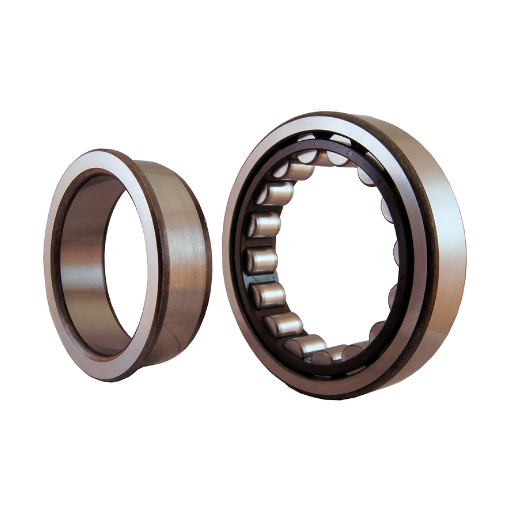
Passive Magnetic Bearings Explained
Passive magnetic bearings use permanent magnets to hold rotating devices without any mechanical contact. These bearings depend on the magnetic repulsion or attraction force to hold the device in position without using any outside energy source. Unlike active designs, passive systems do not use electronic sensors or controllers so they are easier and cheaper to manufacture. However, they are constrained by Earnshaw’s theorem which says that passive magnetic systems are unstable in certain axes.
- Magnetic Flux Density: It indicates the strength of the magnetic fields in the bearing and is often given in Tesla (T). It must have sufficient flux density to provide effective load-bearing capability.
- Load Capacity: The material properties and the arrangement of the magnets dictate the maximum passive axial and radial load the system will support. This capacity is estimated from magnetic force equations.
- Operational Temperature Profile: Neodymium Iron Boron (NdFeB) offers the greatest magnetic strength amongst permanent magnets but has moderate temperature thresholds as high temperatures can cause loss in magnetism. They do have a maximum operating temperature which is the critical limit.
- Frictionless Operation: Mechanical friction is eliminated by noncontact, so these bearings have a longer lifespan for suitable applications.
With these factors in mind, I can evaluate and determine how passive magnetic bearings work and if they work for the given requirements. They can support contactless, efficient engagement, which makes them applicable in some engineering cases.
Advantages in High-Speed Applications
Passive magnetic bearings have their own significant merits in high-speed applications to make sure performance is efficient in challenging environments. To begin with, as a result of frictionless operation, energy losses are minimized. Turbomachinery or high-speed spindles, for example, can spin at fast speeds because of the absence of heat or mechanical wear which is particularly damaging. This is especially important for contexts where reliability and accuracy are needed at extremely high levels.
On top of that, maintenance is needed less frequently because the elimination of physical contact does away with lubrication requirements. Moreover, devices that do not operate with traditional bearings will, at the bare minimum, be able to consistently function in environments where other devices from traditional bearings would fail. The tiniest imbalance along with motion will see the elimination of rotational restrictions that will enhance performance while increasing the lifespan of connected components.
- Speed Spindle Limitations: Passive magnetic bearings without aerostatic support can reach an exceeded rotative speed of one hundred thousand RPM, but only if the optimal configurations of the materials and magnetic field are employed.
- Weight Limit: These types of bearings, due to their geometry, can handle certain specified radial and axial loads, but the aperture of application is restricted by the flux density which is measured in tesla.
- Heat Tolerance: The operating range of these devices is thermally limited to ensure that the magnet performance is not compromised, where they best perform at temperatures below 150 °C.
Taking all these technical aspects into account, the benefits passive magnetic bearings provide in high-speed operations can be easily claimed. This technology, which is devoid of friction and the need for maintenance, greatly aids in heightening the performance of sophisticated engineering systems.
How Are Fluid Bearings Used in Industry?
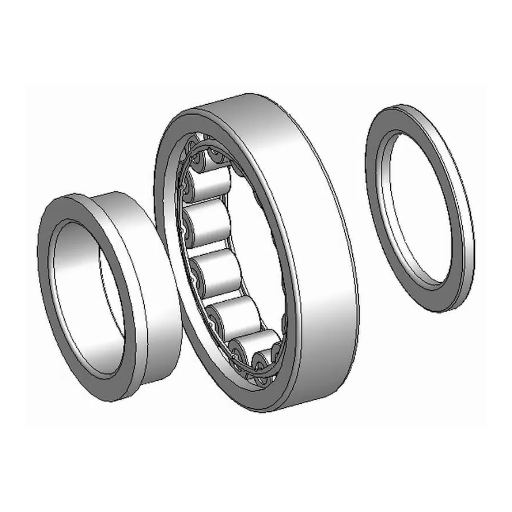
Benefits of Using Fluid Bearings
Fluid bearings have many critical benefits in many industries, especially in systems where accuracy and low friction are essential. As for performance, these bearings work without direct surface contact which means that metal-to-metal contact wear and maintenance needs are significantly reduced. These bearings are also great for supporting high-speed rotation, which makes them perfect for turbines, compressors, and machine tools.
- Load Capacity: The liquid or gas film bearing works using a thin layer of fluid or gas, this allows it to distribute the load over a larger area which results in incredible axial and radial load handling capability. This is especially useful in heavy machines and power generation equipment.
- Friction and Wear Reduction: Because there is no surface contact, losses due to friction are very low. This increases the efficiency of the working fluid and increases component life.
- Thermal Stability: The fluid can absorb heat and transfer it away from heated areas. Hence it helps with maintaining thermal stability during prolonged operation in high speed or high temperature extremes.
- High Precision: The absence of metal-on-metal contact allows an extremely low level of vibration and noise to be produced, this results in operational performance being highly accurate which is important in supreme sensitive industrial appliances, like semiconductor manufacturing.
Based on these details, it is clear that fluid bearings are ideal for situations where strength, efficiency, and accuracy are the most important. These bearings are designed in a way that guarantees reliable performance in terms of operating conditions which is why they are a crucial part of many sophisticated engineering systems.
Common Industrial Applications for Fluid Bearings
Fluid bearings find applications in industries that require high accuracy, reliability, and productivity. Such industries include:
- Semiconductor Manufacturing Equipment: Fluid bearings are required because of their high precision grade and minimal vibration, during the creation of semiconductors because the tolerances are incredibly tight. These bearings assure the precision of a micron, which is necessary for the production of high-end chips.
- Turbomachinery: In turbines, compressors, and pumps fluid bearings are extensively used because they can endure high speeds and temperature extremes. Specific values like thermal Stability (over 300°C) and low friction coefficients (<0.001) are critical in these applications so that prolonged operation can be sustained without performance degradation.
- Aerospace Systems: Aircraft instruments and propulsion fluid systems get enhanced by fluid bearings because of their resistance to high rotational speed wear which increases systems reliability and prolongs service life under extreme conditions.
- Precision Machining Tools: CNC machine spindles almost always have fluid bearings, which eliminate noise, vibration, and heat generation thereby ensuring greater machining accuracy and longer tool life.
- Power Generation Sector: Generators and large-scale electrical machinery implement fluid bearings to improve energy efficiency and achieve smoother operation under high load conditions, attributed to their capability to support heavy shaft loads while maintaining low friction levels.
By addressing these applications, it is evident how the innate design parameters of fluid bearings directly align with the stringent demands of advanced industrial systems, justifying their adoption in such critical systems.
Frequently Asked Questions (FAQs)
Q: What are the different types of bearings available?
A: Bearings come in various types including ball bearings, cylindrical roller bearings, spherical roller bearings, needle roller bearings, thrust ball bearings, and self-aligning ball bearings. Each type is designed for specific applications and load requirements.
Q: How does a ball bearing differ from a cylindrical roller bearing?
A: A ball bearing uses spherical balls to maintain the separation between the bearing races, allowing for low friction and smooth motion. A cylindrical roller bearing, on the other hand, uses cylindrical rollers to accommodate heavier loads and higher radial load capacities.
Q: What are spherical roller bearings used for?
A: Spherical roller bearings are designed to handle heavy loads and can accommodate misalignment between the shaft and the housing, making them ideal for applications where angular misalignment is a concern.
Q: Can you explain the function of needle roller bearings?
A: Needle roller bearings are a special type of rolling bearings that use long, thin cylindrical rollers to handle heavy loads with a compact design. They are often used in applications with limited radial space.
Q: What is the purpose of thrust ball bearings?
A: Thrust ball bearings are designed to handle axial loads in one direction. They consist of two bearing discs and a set of ball bearings and are often used in applications where axial loads are predominant.
Q: How do angular contact bearings differ from other bearings?
A: Angular contact bearings are designed to handle combined loads, both radial and axial, by supporting the load at an angle. This makes them suitable for applications where high precision and speed are required.
Q: What role do deep-groove ball bearings play in machinery?
A: Deep-groove ball bearings are widely used due to their versatility and ability to handle both radial and axial loads. They are the simplest type of ball bearing and are used in various applications, from household appliances to industrial machinery.
Q: Why are self-aligning ball bearings important in engineering?
A: Self-aligning ball bearings contain two rows of balls and a common spherical outer ring raceway. They are designed to handle shaft misalignments, reducing energy consumption and extending the life of the bearing.
Q: How are roller thrust bearings used in industrial applications?
A: Roller thrust bearings are designed to support axial loads in high-load applications. They consist of cylindrical rollers arranged perpendicularly to the shaft and are used in applications where high axial load capacity is required.
Q: What are the advantages of using a sleeve bearing?
A: Sleeve bearings are a type of plain bearing used to support rotating shafts. They are simple in design, cost-effective, and can handle moderate loads with low friction, making them suitable for various industrial and automotive applications.
UCTH213-40J-300 with Setscrew(inch)
CNSORDERNO: Normal-duty(2)
TOGN: UCTH213-40J-300
SDI: B-R1/8
SD: 2 1/2
UCTH212-39J-300 with Setscrew(inch)
CNSORDERNO: Normal-duty(2)
TOGN: UCTH212-39J-300
SDI: B-R1/8
SD: 2 7/16
UCTH212-38J-300 with Setscrew(inch)
CNSORDERNO: Normal-duty(2)
TOGN: UCTH212-38J-300
SDI: B-R1/8
SD: 2 3/8
UCTH212-36J-300 with Setscrew(inch)
CNSORDERNO: Normal-duty(2)
TOGN: UCTH212-36J-300
SDI: B-R1/8
SD: 2 1/4
UCTH211-35J-300 with Setscrew(inch)
CNSORDERNO: Normal-duty(2)
TOGN: UCTH211-35J-300
SDI: B-R1/8
SD: 2 3/16
UCTH211-34J-300 with Setscrew(inch)
CNSORDERNO: Normal-duty(2)
TOGN: UCTH211-34J-300
SDI: B-R1/8
SD: 2 1/8









